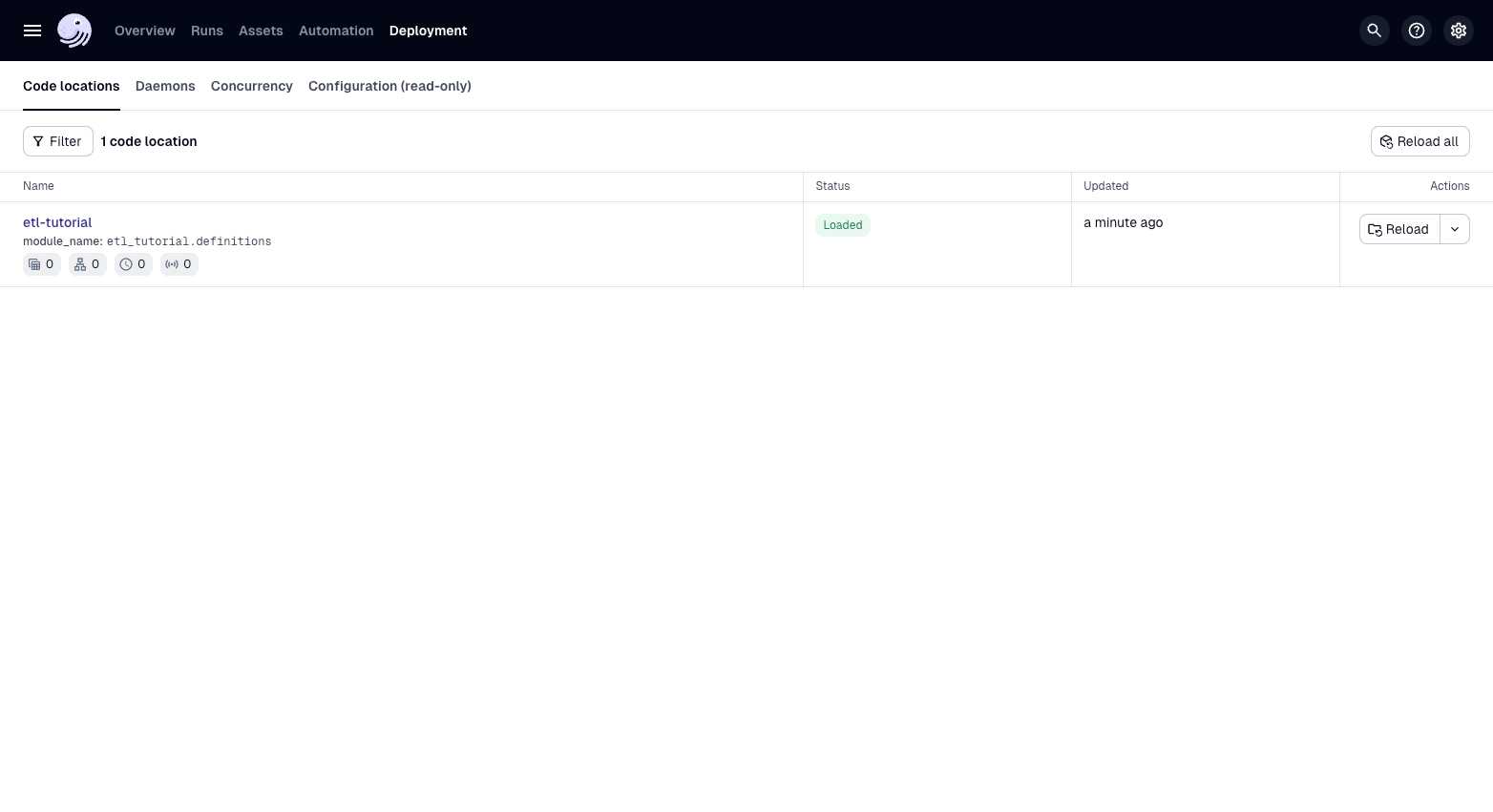Build your first ETL pipeline
In this tutorial, you'll build a full ETL pipeline with Dagster that:
- Ingests data into DuckDB
- Transforms data into reports with dbt
- Runs scheduled reports automatically
- Generates one-time reports on demand
- Visualizes the data with Evidence
You will learn to:
- Set up a Dagster project with the recommended project structure
- Integrate with other tools
- Create and materialize assets and dependencies
- Ensure data quality with asset checks
- Create and materialize partitioned assets
- Automate the pipeline
- Create and materialize assets with sensors
Prerequisites
To follow the steps in this tutorial, you'll need:
- Python 3.9+ and
uvinstalled. For more information, see the Installation guide. - Familiarity with Python and SQL.
- A basic understanding of data pipelines and the extract, transform, and load (ETL) process.
Set up your Dagster project
-
Open your terminal and scaffold a new project with
uv:uvx create-dagster project etl-tutorialCreating a Dagster project at <YOUR PATH>/etl-tutorial.
Scaffolded files for Dagster project at <YOUR PATH>/etl-tutorial.
... -
Change directory into your new project:
cd etl-tutorial -
Activate the project virtual environment:
- MacOS
- Windows
source .venv/bin/activate.venv\Scripts\activate -
To make sure Dagster and its dependencies were installed correctly, start the Dagster webserver:
dg devIn your browser, navigate to http://127.0.0.1:3000
At this point the project will be empty, but we will continue to add to it throughout the tutorial.

Next steps
- Continue this tutorial with extract data